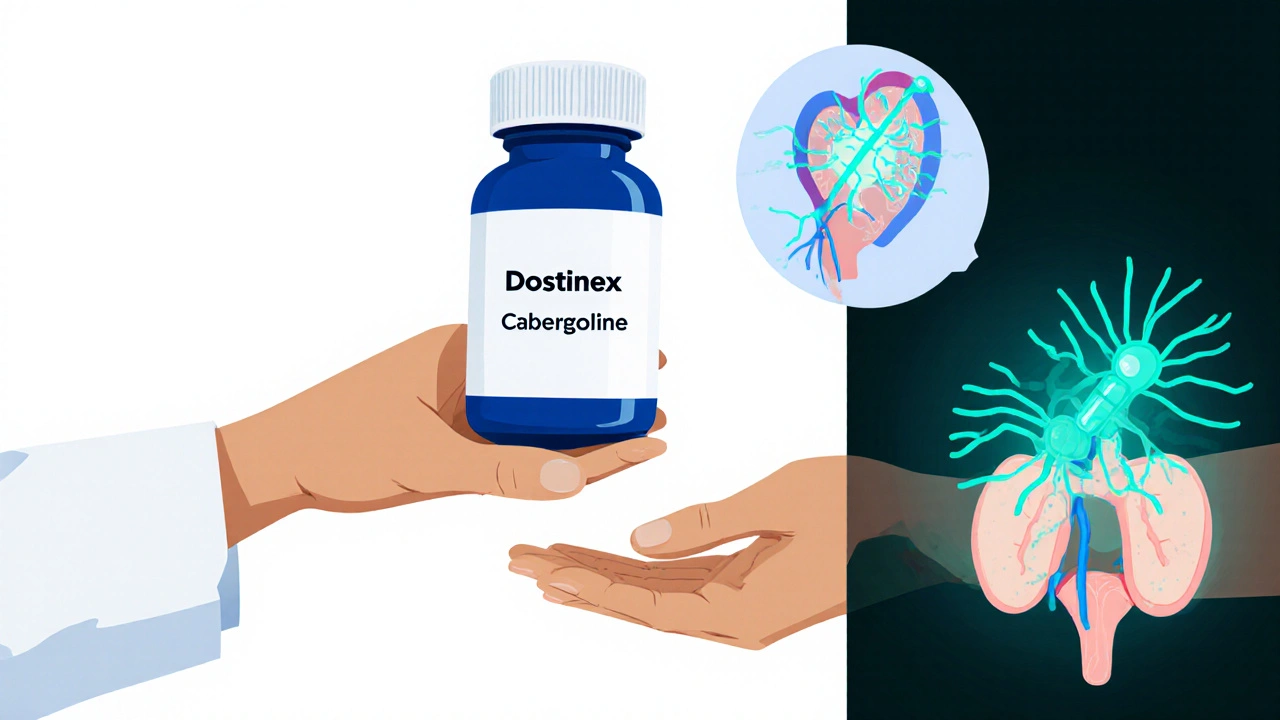
Dostinex (Cabergoline) vs. Alternatives: Complete Comparison Guide
A detailed guide comparing Dostinex (Cabergoline) with bromocriptine and quinagolide, covering efficacy, side effects, dosing, cost, and how to choose the right option.
When you hear Dostinex, a prescription medication used to lower prolactin levels by mimicking dopamine in the brain. Also known as cabergoline, it's one of the most common treatments for hyperprolactinemia — a condition where the body makes too much prolactin, which can cause irregular periods, low libido, or even breast milk production in people who aren't nursing. Unlike older drugs that just blocked prolactin, Dostinex works by activating dopamine receptors, which tells the pituitary gland to cut back on prolactin production. This makes it more targeted and often more effective with fewer side effects.
Dostinex doesn’t work in isolation. It’s part of a group called dopamine agonists, drugs that stimulate dopamine receptors to regulate hormone levels. Other members include bromocriptine, which has been around longer but often causes more nausea and dizziness. Then there’s hyperprolactinemia, the medical condition Dostinex is primarily prescribed for. It’s not just about fertility or milk production — high prolactin can also lead to bone loss, headaches, or vision problems if caused by a pituitary tumor. That’s why knowing your prolactin levels and tracking them over time matters.
People often wonder if Dostinex is the only option. It’s not. Some switch to bromocriptine if Dostinex doesn’t agree with them. Others use it for off-label uses like managing Parkinson’s or even reducing testosterone suppression in steroid cycles. But the real question isn’t just about alternatives — it’s about what works for your body. Dostinex is taken just once or twice a week for many people, which is easier than daily pills. But it can cause dizziness, low blood pressure, or even heart valve issues in rare cases with long-term, high-dose use. That’s why monitoring isn’t optional.
What you’ll find below isn’t just a list of articles. It’s a collection of real comparisons and practical guides that help you understand where Dostinex fits in the bigger picture. You’ll see how it stacks up against other dopamine agonists, what patients actually experience, and how it relates to other hormone-related treatments. Whether you’re newly diagnosed, considering a switch, or just trying to make sense of your prescription, these posts give you the facts without the fluff.

A detailed guide comparing Dostinex (Cabergoline) with bromocriptine and quinagolide, covering efficacy, side effects, dosing, cost, and how to choose the right option.